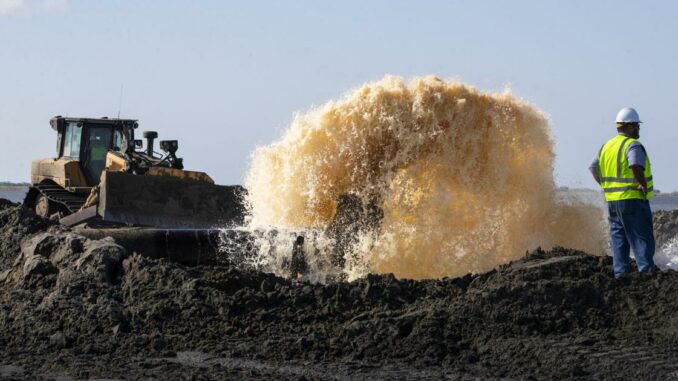
This graphic compares revenue from 2023 and 2024 with potential existing and new revenue streams that may be available in 2032, when money connected to the BP oil spill will no longer be available. (Coastal Protection and Restoration Authority)
The state expects to continue to receive some funds through the federal Coastal Wetlands Planning, Protection and Restoration Act, which is dedicated to restoration projects.
Since its inception in 1990, this law has resulted in the state getting between $30 and $80 million a year, with the money coming from a federal tax on fuels used by small engines, such as outboard motors. The state is required to put up 15% of its own money as part of this program. No changes are expected in this law.
The state also already dedicates a share of its own mineral revenues to the coastal protection and restoration trust fund, but while this resulted in up to $30 million a year available for projects in the past, reductions in oil and gas production in the state have left only $12 million being available in recent years.
Beyond those, coastal projects have benefited from a share of state surplus dollars in 2007, 2008, 2009, 2018, 2020, 2021, 2022, and possibly again this year. But the amounts also have been limited, ranging from $51 million in 2021, to an average of $263 million for the 2007-2009 years.
Officials hope that revenue could be gained from the potential for coastal restoration projects to capture and hold carbon emissions. Wetland grasses use carbon dioxide to grow, and when they die, the carbon within the organic material gets buried in sediment, and can stay in place until the land beneath the wetlands is eroded.
The problem is attempting to monetize the sequestration by selling credits to businesses that need to show they are reducing carbon emissions, or by getting federal funding for the credits. Development of such a plan is likely several years away, although a consortium of northeastern states already has created a similar voluntary credit plan.
There is also potential revenue coming to the state through the filing of 43 lawsuits against oil and gas companies by coastal parishes, which proponents of the suits say could result in billions of dollars in damage payments or restoration projects. The lawsuits are seeking to force oil firms to pay for damage their operations have done to the coast over the years.

Leave a Reply